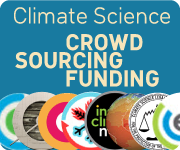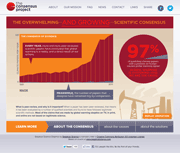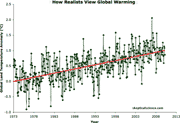Clean energy generates major economic benefits, especially in red states
Posted on 31 March 2025 by Guest Author
This is a re-post from Yale Climate Connections by Karin Kirk
When former President Joe Biden left office, the Department of Energy was overseeing more than $300 billion in public and private investments in clean energy under the Inflation Reduction Act. Nearly three-quarters of these investments were slated to flow to states that voted for President Donald Trump in the 2024 election, a Yale Climate Connections analysis shows.
But on the first day of his second term, President Donald Trump signed an executive order attempting to halt some payments under that law, with the potential to hurt his own voters the most.
A landmark climate law
The Inflation Reduction Act, or IRA, passed by Democrats in 2022, made ambitious commitments to modernize the nation’s energy sources, boost competitiveness in new energy technology, grow American manufacturing jobs, and reduce climate-warming pollution. It committed at least $369 billion to energy and climate programs, to be distributed through multiple programs and agencies over 10 years.
The Trump administration has attempted to pause further payments from the IRA, including those that had been already approved. For example, the administration froze funding for the Environmental Protection Agency’s Solar for All program, which had already begun giving out $7 billion in grants to help purchase and install solar panels for lower-income households. Weeks later, the funding for that program was restored, and it remains unclear if courts will allow the Trump administration to freeze IRA funding that had already been appropriated.
The uncertainty around many IRA programs seems likely to disrupt planning for new projects and investments. This is especially true for projects with a multiyear planning process, such as battery factories, electrical grid upgrades, and electric vehicle plants. The situation is ever-evolving, and you can track recent changes with the Inflation Reduction Act Tracker.
How the Inflation Reduction Act works
- The IRA aims to reduce climate-warming pollution across many facets of society and is funded through multiple government agencies.
- For example, the EPA offers rebates for clean heavy-duty vehicles, the USDA is funding efforts to improve soil carbon uptake on farmlands, and the Department of Energy is using tax credits to incentivize the construction of new clean energy projects. The Inflation Reduction Act Database lists the programs at each agency.
- The federal government provides direct funding to projects in some cases.
- In other cases, the government offers a tax credit as an incentive for a private company to build a new project. For clean energy projects, these private investments are greater than the government funding. For example, spending $740 billion in tax credits from the IRA was expected to generate $2 trillion in private investments.
- Funding for energy and climate programs under the IRA was originally expected to cost $391 billion. Since then, many of the tax credits have proved to be more popular than originally anticipated. As more companies and individuals claim tax credits, this raises the price tag of the IRA, but it expands the benefits, too.

The Department of Energy is one of the largest avenues for funding clean energy projects under the Inflation Reduction Act. An analysis of Department of Energy data shows that roughly $300 billion in clean energy investments had been announced through the end of Biden’s term. This tally includes private investments such as companies setting up new factories and building new energy infrastructure, as well as loans and grants directly from the government to fund projects like weatherizing buildings or training workers for modern energy jobs. About 73% of these investments were allocated to projects in states that voted for Trump in 2024. On a per-person basis, people living in red states were slated to receive nearly double the monetary investment compared to people living in blue states.
The chart above shows the amount of money per person that each state was slated to receive for energy projects under the Inflation Reduction Act. Michigan, Indiana, and South Carolina had been expected to gain the largest clean energy investments per capita.
Looking at the total amount of money going to each state, rather than on a per capita basis, the largest investments are slated for California, Michigan, and Georgia.

The Inflation Reduction Act was projected to save $5.6 trillion in avoided climate impacts, globally, from 2023 to 2050. The economic benefits from cleaner air were estimated at $49 billion in the U.S. in 2030 alone, due to reductions in illnesses and deaths caused by air pollution from power plants, vehicles, and buildings.
Cleaner air would prevent around 86,000 asthma attacks, 3,700 heart attacks, and 1,700 hospital admissions in the U.S. in 2030 alone, according to research by Energy Innovation, a Yale Climate Connections content-sharing partner. A healthy population is a productive one, and these health improvements would add up to over 300,000 more workdays in 2030 due to less time lost from illnesses. Between now and 2030, cleaner air and better public health were estimated to save the U.S. economy between $118 and $200 billion.
This same research found that the Inflation Reduction Act would spur the creation of over 1 million U.S. jobs in 2030, primarily in manufacturing, construction, services, and trade. Much of that economic growth was expected to occur in the private sector as tax credits motivated companies to invest in modernizing energy, such as upgrading power plants and building new factories.
Data sources and additional information
The Department of Energy database of IRA projects is still available as of March 27, 2025, and here as a .csv file.
There are several versions of maps and databases showing IRA investments.
Grist has made a database that tracks individual projects: Where did billions in climate and infrastructure funding go? Note that this database does not include private investments.
The Clean Economy Tracker tracks private-led investments and jobs in clean energy and technology manufacturing as well as nonmanufacturing, commercial scale deployment projects in the United States.
Inflation Reduction Act Database compiles information about the climate change-related provisions of the IRA, organized by federal agency. The Inflation Reduction Act Tracker shows steps taken by the agencies to implement – or halt – the provisions.































 Arguments
Arguments






























Comments